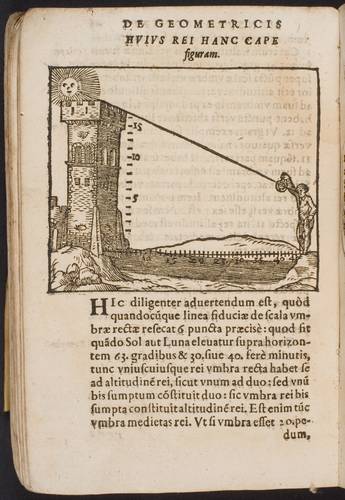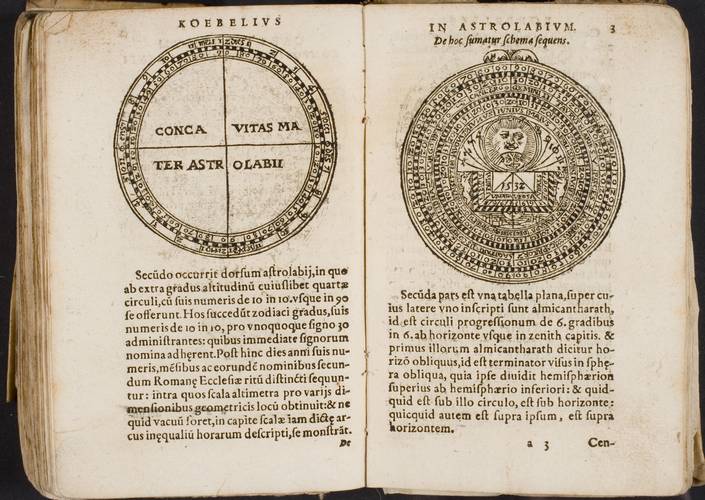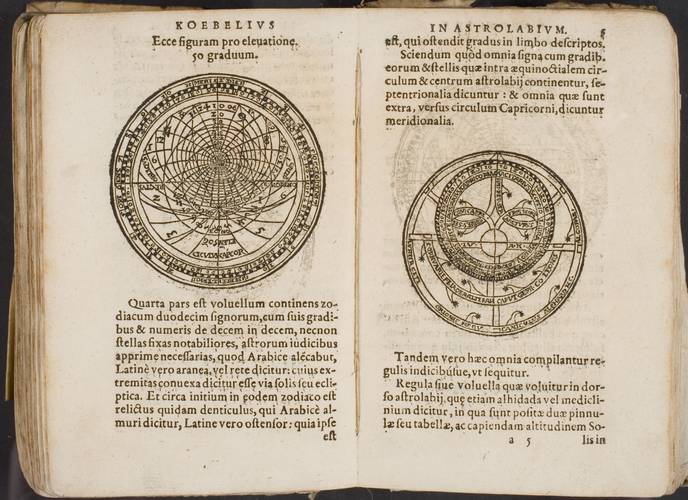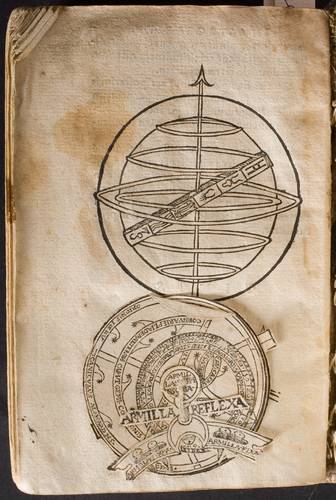Hinc itur ad astra
» Astronomical devices (3/14)
The illustration shows how to measure the height of a building with the help of astrolabe
German universal scientist, mathematician and astronomer, book publisher, artist and engraver’s Jacob Köbel‘s (1470–1533) treatise Explanation of Astrolabe issued together with another German scientist, Tubingen University rofessor of mathematics Johann Stöffl‘s (1452–1531) book Elucidation of astrolabe construction and use. Both books provide details of construction of astrolabe and its usage possibilities
Astrolabe (a small calculation machine or in modern language – GPS) – it is an ancient astronomical device of a disk form (about 15 cm in diameter). Astrolabe was used to locate the position of celestial bodies; determine local time (day – according to the Sun or night – according to the stars), season of the year, calculate which part of the celestial sphere is visible at that moment, establish the height of any object above the horizon, very precise geographic latitude. This device consisted of three concentric rotating engraved disks with a ring at the top. On the side of the main disk several circles were engraved with different calculation systems (e.g.: 365 days, 12 months, etc.). Engravings were used to carry out trigonometric calculations. The other part of the disk was engraved as well. The outer circle was divided into 24 hours, denoted by letters. The second circle was used as a calendar (months were marked by Zodiac constellations). The Tropic of Capricorn and the equator are delineated in the central part, the celestial pole – in the centre of the disk. At this side another rotating disk with apertures was attached, enabling to see the signs of the under disk. The layout of apertures conformed to the star chart, the wide circle to Zodiac constellations, several specific signs marked the most important stars. A thin engraved disk or a marked paper plate could be inserted between the celestial disk and astrolabe body. Regulating the „Celestial“disk it was possible to establish the visible starry part of the sky, the height of celestial bodies above the horizon and likewise. At the astrolabe there was usually a ruler attached. Holding the device by the ring, with the help of a ruler it was possible to establish the height of a celestial body above the horizon and afterwards to perform necessary calculations using the rings engraved on the astrolabe. Astrolabe construction and usage principles were known since about 150 B.C. The device was started to be made about 400. In Middle Ages it was prevalent in Arab countries, and came to Europe most probably via Spain in XII c. It was used almost up to 1650, when it was changed by other astronomical devices of New Ages. Seafarers used mariner‘s astrolabe to determine the latitude of a ship at sea (later changed by sextant)
Examples of disks - two separate constituents of astrolabe
Examples of two other astrolabe disks
two already sewn small models of astrolabe inset at the end of the book




